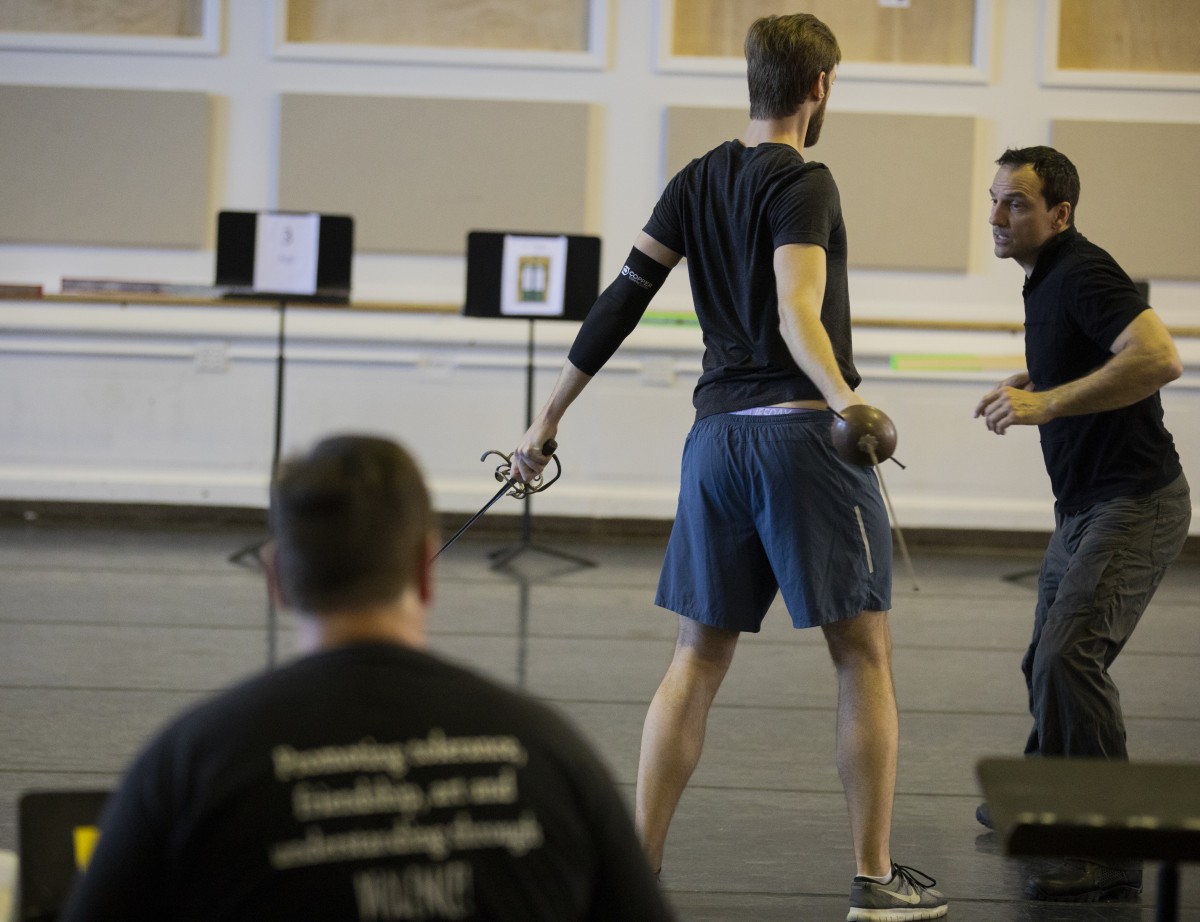Dale Girard loves his job, mostly because he gets to play with swords all day.
Girard has worked with Chautauqua Opera Company in recent weeks leading up to its opening production of Don Giovanni to choreograph the opera’s fights, from the title character’s sword fight with Commendatore to small altercations that happen throughout. A lot of thought and consideration goes into choreographing fight scenes, and ultimately, Girard’s goal is to make it look like he hasn’t worked with the actors at all.
Chautauqua Opera’s production, which will take place at 8:15 p.m. Saturday, July 7, in the Amphitheater, is Girard’s 10th time working with the opera’s score from Mozart and libretto from Da Ponte. Being familiar with the score is one of the most important parts in choreographing opera fight scenes, he said.
Mapping the choreography for opera is different than theater productions, Girard said. With theater, there is room to make foght scenes shorter or longer because there is no score to follow. In opera, the score provides a set number of measures in which the fight has to take place and presents a clear moment for the climax of the fight.
The score also shows where fighting should start or intensify, as shown through crescendos and decrescendos in the volume of the orchestra. Fermatas and trills from the orchestra are used as built-in cues for the actors to signify where they are in the opera. If the timing of the fight is too fast or slow, Girard puts in “physical fermatas” where the actors can hold positions or proceed to the next move while the orchestra holds its notes.
“In opera, a lot of times the fights aren’t in the counts of the music like you would in ballet, because then it feels dance- like,” said Girard, who has choreographed fights in theater, film and television. “The music actually helps amplify the fight instead of playing to the beats of the fight.”

There are two prominent fight scenes in Don Giovanni: the sword fight with Commendatore and the beating of Masetto. Guest artist David Adam Moore, who plays Don Giovanni, thinks the fight with Masetto is more brutal than the one with Commendatore.
In the scene with Masetto, Giovanni tricks Masetto into giving Giovanni his musket. When he grabs hold of the gun, Giovanni beats Masetto while talking to him. On stage, Moore isn’t actually hitting the actor who plays Masetto, but his goal is to make it look like he is.
“The big part of fight choreography is establishing the illusion we’re selling,” Moore said. “What are we trying to make this look like? Because what we’re making this look like is not what we’re doing.”
For Giovanni’s sword fight with Commendatore, Girard ensured the movements were in line with the characters’ personality traits. Girard made it clear through the sword’s movements that Commendatore is aiming to kill Giovanni with linear and direct swordsmanship. Giovanni is self-assured, so his fighting style is more flamboyant and includes more circular, owing motions.
“We still get that sense of who he is, his behavior,” Girard said. “Otherwise, it’s just a sword fight.”
The hardest part about doing fight scenes is coordinating the breath with the movements in the fight, Moore said. The performers have to be prepared to sing, whether it’s during or after the scene.
Girard tries to mitigate the strain fighting can put on an artist’s vocals. If the actor is uncomfortable, they might tense up and harm their voice. Girard said his job is to make sure that doesn’t happen, and ensure the performers’ voices are as free as possible.
“If you’re in a fight scene and you’re really getting into it…and all of a sudden you have to sing a big trio afterward, you’re going to be winded,” Moore said. “So you’ve got to work out modifications through the fight scene itself or maybe a different way of singing following the fight scene.”
If he does his job right, Girard said the audience shouldn’t realize the fights were choreographed. But, if done wrong, the audience might feel there was something off or missing from those scenes.
“A good piece of fight choreography calls attention to the story and the character to the point that the audience fears for the character but not for the actor,” Girard said. “And when (the audience) comes out of it thinking the actor is a great sword fighter, rather than who put that fight together, then I’ve done my job. So the thing I’m looking forward to is being forgotten.”











